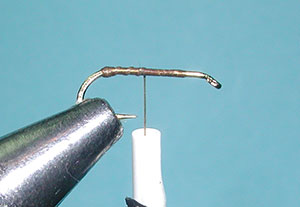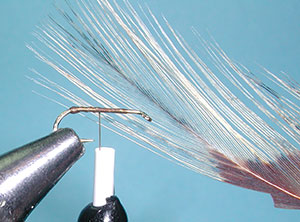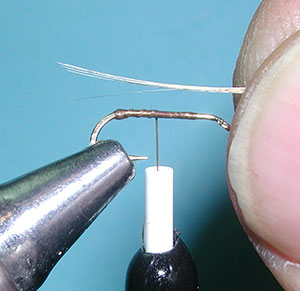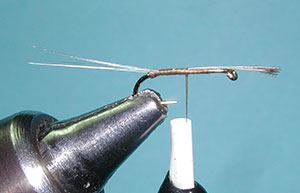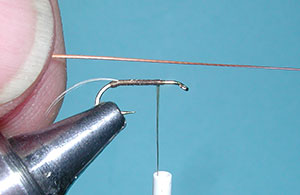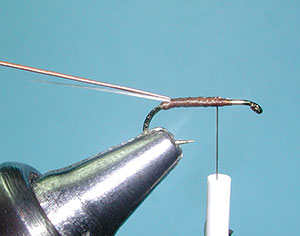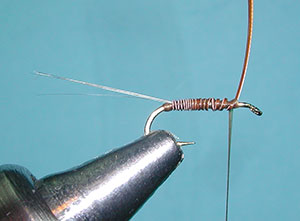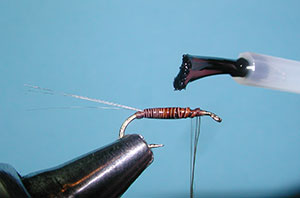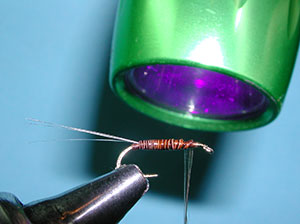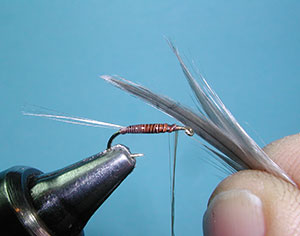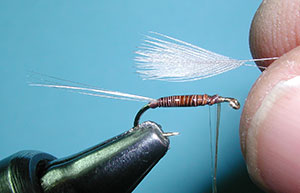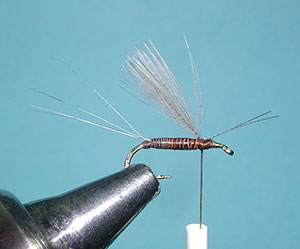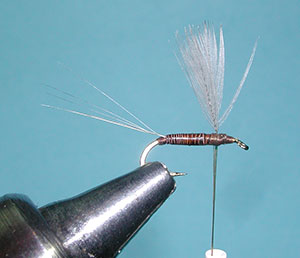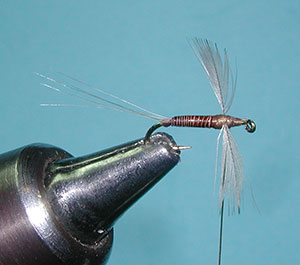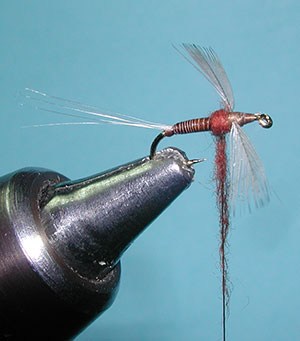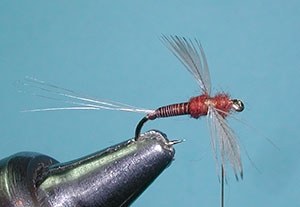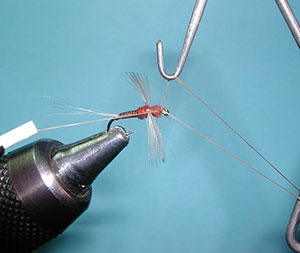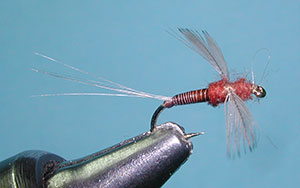Quilled Spinners – focus thin as a quill
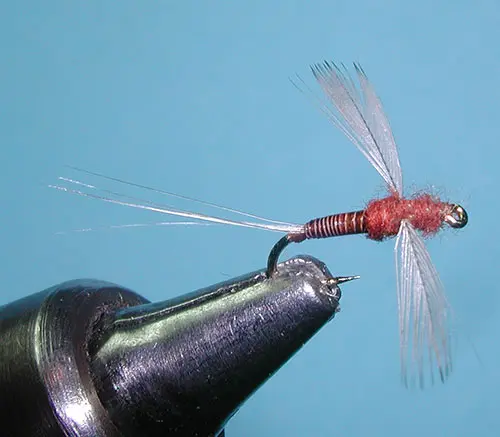
Rusty Spinner
Tying Instructions
| Materials
to Order Material, click the link |
|
|---|---|
| Hook | TMC 100, #16-20 |
| Thread | Uni-thread Rusty Brown 8/0 |
| Body | Red Quill dyed Quill |
| Tail | 5-6Light Pardo Tailing Fibers |
| Spent Wing | Pair ofDun Hen Neck Hackletips |
| Thorax | Rust Superfine |
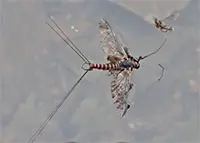
Quilled Spinners
Quilled Spinners are very slender in profile. They are mayfly duns that have molted their layer of exoskeleton. They do this to allow for ease of mating. Males fall into the water exhausted after mating while the females fall into the water, after they have rested, matured their eggs, and deposited the eggs in the water. The use of quills for the abdomen does a great job in mimicking this body profile. The quills have an advantage in showing segmentation as well as the light-reflecting qualities of the natural.
Tapered Profile
In addition, quills have great buoyancy and will give a tapered profile. Since many mayflies will mature into a rusty brown coloration, the Rusty Spinner has been a primary pattern that can cover many different mayflies, including Blue Wing Olives and Pale Morning Dun, and Callibaetis, since their bodies will all tend to have the same rusty coloration once the exoskeleton is shucked..
English Roots
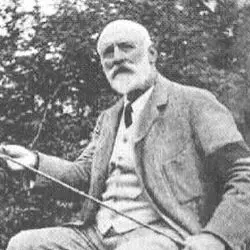
Frederick Halford
Quill bodies on spinners has a long history going back to England where British anglers such as Frederick Halford (photo at right) preferred to use stripped quills to achieve natural segmentation and a thin body on his spinner patterns. H.G. McClelland wrote about stripped saddle hackle for fly bodies in his book, “How to tie flies for Trout and Grayling” in 1898 and how he learned of the material from a friend who stripped dark red gamecock for rusty spinners or red quill spinners.
Catskill Tiers
Across the pond, tiers such as Theodore Gordon, Harry Darbee, and Mary Dette, preferred to use stripped peacock herl on many of the Catskill patterns. Art Flick was known to use Rhode Island Red quills for his Red Quill pattern. A.K. Best was instrumental in re-popularizing the stripped hackle quill from his books in the 1990’s, A.K’s Fly Box(1998) andDyeing and Bleaching Fly Tying Materials(1993).
Today, dyed quills are commercially available in an assortment of colors making it quite easy for the fly tier to utilize this material. D’s Flyes markets Quill Bodies from Chinese Neck hackles, Polish Quills are stripped and dyed Peacock quills, and there is now synthetic quills available in numerous colorations that are self-adhesive and tapered.
Spinner Wings
Quilled Spinners have traditionally been tied without hackles since the spentwings serve as floatation and the body should lie entirely within the surface film. This does make them very difficult to see and anglers often shy away from spinner patterns due to this. Spentwings have historically been feather tips from hen hackles, since they are broad with rounded tips. The tips will show a realistic profile of wings on the water surface with the hackle fibers producing a translucent effect of a wing.
The most difficult part of using hackle tips is to get them uniformly sized and to lay flat in a horizontal position. Some tiers find it easier to utilize fiber material for the spentwings such as poly yarn or Z-lon. This material is buoyant, durable, and easy to lash to the hook shank. The number of strands can be selected to give the proper effect of a translucent wing on the water surface.
Variations
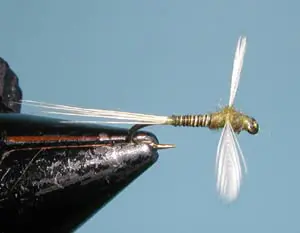
BWO Quilled Spinner
| Hook | TMC 100, #16-22 |
| Thread | Uni Thread Olive 8/0 |
| Body | BWO dyed Quill |
| Thorax | Blue Wing Olive Superfine |
| Tail | 10-12 White Spade Hackle Fibers |
| Spent Wing | Pair of White Hen Hackle tips |
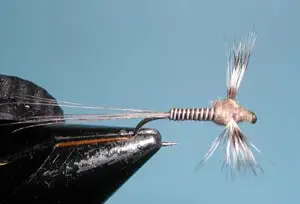
Callibaetis Quilled Spinner
| Hook | TMC 100 #14-16 |
| Thread | Uni Thread 8/0 Gray |
| Body | Blue Quill |
| Thorax | Callibaetis Superfine |
| Tail | Med. Dun Spade Hackles |
| Spent Wing | Grizzly Spade Hackle, 2 sizes over hook size |
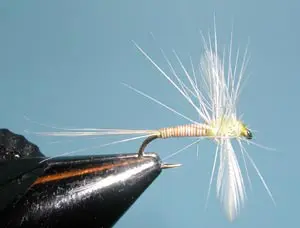
Pale Morning Dun Quilled Spinner
| Hook | TMC 100, #14-24 |
| Thread | Uni-thread 8/0 Yellow |
| Body | Ginger Dyed Quill |
| Thorax | PMD Superfine |
| Tail | Light Ginger Spade Hackle Fibers |
| Spent Wing | Pair of White Hen Hackle tips |
| Hackle | Ginger Hackle, four turns, clipped on bottom |

